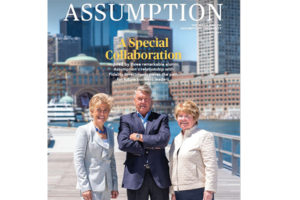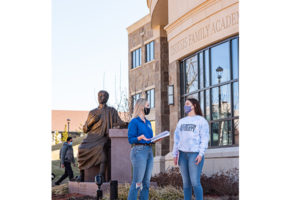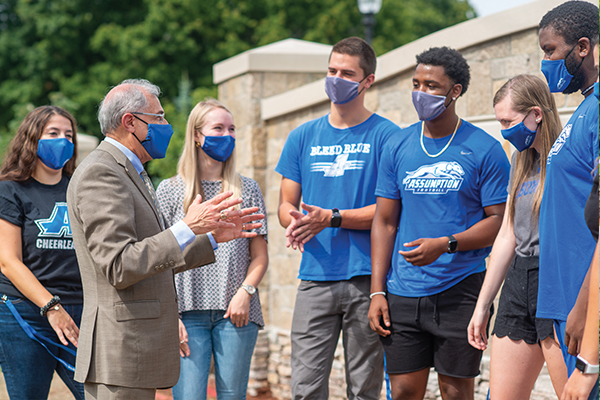
Three years ago Assumption’s leadership team ventured off campus for a summer retreat. Their focus was exploring how to navigate the future “in a way that would allow us to respond more quickly as an institution to the rapidly changing environment in which colleges were operating,” said President Francesco C. Cesareo, Ph.D.
As cabinet members examined Assumption’s newest academic offerings it became clear that the institution could more effectively serve students if it restructured into separate schools.
“By organizing different academic programs according to common and related disciplinary and pedagogical principles and approaches, we believed that the faculty in those schools could be more innovative, nimble, and creative than under the one-college system,” President Cesareo explained.
Following the establishment of a Restructuring Committee comprised of administrators, faculty, and staff, and after more than a year of deliberation, Assumption was reorganized into five separate schools: the D’Amour College of Liberal Arts and Sciences, the Grenon School of Business, the Froelich School of Nursing, the School of Health Professions, and the School of Graduate Studies.
“Adapting to the challenges in higher education – and accurately describing what we were already becoming – required a new structure, but its purpose was to enliven who we have always been,” said Provost and Academic Vice President Greg Weiner, Ph.D. “Majors at Assumption are unique because every one of them is built on the foundation of, and continues to draw from, the focus on the enduring principles of Catholic liberal education to which we are dedicated. We did not change the structure to change who we are. We changed it to amplify what we have always aspired to do.”
As the process unfolded, the question arose as to whether Assumption should seek University status, given the comprehensive nature of its academic offerings, its campus in Rome, and the growth of the number of graduate programs. The Department of Higher Education of the Commonwealth of Massachusetts agreed, and Assumption College officially transitioned to Assumption University on June 10.
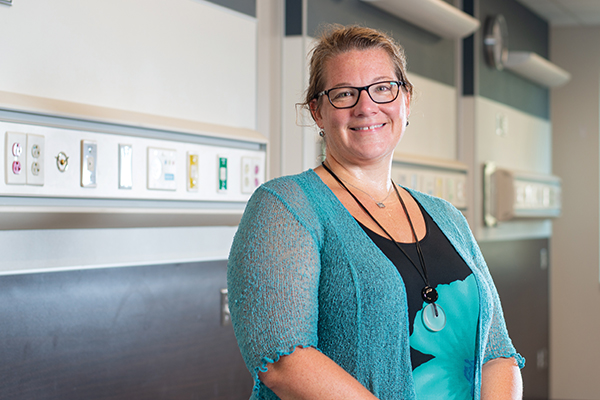
A Unifying Moment
In Ex Corde Ecclesiae, St. Pope John Paul II characterized a university as a community whose common good is the pursuit of truth. “He wrote that Catholic universities are ‘called to a continuous renewal, both as universities and as Catholic,’” said Provost Weiner. “Becoming a university is an act of renewal for Assumption – a recognition that our common good, our shared mission of Catholic liberal education, requires a structure that is new to pursue a mission that is timeless.”
According to President Cesareo, the University designation gives Assumption a broader platform and moves the institution into a new tier of higher education institutions. “In today’s higher education climate, innovation, creativity, flexibility, and ‘first to market’ are essential in order to remain competitive. Institutions that do not respond quickly to emerging market and student needs consistent with their mission will not be able to sustain a competitive edge vis-a-vis their peers. This is more easily accomplished in a university structure,” he explained. “In addition, the university structure provides prospective students with a better sense of what we have to offer in terms of academic programs, and offers alumni and prospective donors an affinity with a particular school within the University that aligns with their own professional interests that they can support. We have already seen this support materialize.”
The transition also unifies and enhances an Assumption education, said President Cesareo. “When we think of universities today, we often think of the term multiversity,” he explained, adding that a multiversity often refers to universities whose separate schools are isolated from one another, leading to compartmentalization that prevents connection rather than enhancing unity. “The Latin root for the word university means ‘whole, unity, and oneness.’ We were conscious from the very beginning, as we started to think about becoming a university, that we did not want to become a multiversity. The aim was to ensure that we maintained a strong community of scholars and students.”
Provost Weiner added that the transition doesn’t only open more opportunities for students, but facilitates innovation among faculty. “It not only helps to group those with similar interests and methods,” he said, “but far more important will be the new connections between the schools. As a University, the imperative is to be much more deliberate about fostering those connections.”
Throughout the process, the administration was insistent on ensuring the continuation of a unified academic experience that offered students the opportunity to identify with a particular school that met their academic interests, while providing a broad foundation that united their academic experience, as well as all the schools. “The school structure provides students with natural academic homes in which to pursue common interests, but the real promise is much more,” said Provost Weiner. “They will have more opportunities for exposure to new ways of thinking about the enduring questions of a liberal arts education. The structure combines a recommitment to our mission with new avenues of innovation and growth.”
“For us, the integration of the liberal arts serves as the unifying principle,”President Cesareo said. “Every student, regardless of what school they’re in, takes the same liberal arts core curriculum that we have been offering. This is not a movement away from our commitment to the liberal arts. It’s not a diminishment of our commitment to our mission to offer a Catholic liberal education. It’s really a strengthening of that commitment. This integration across all the schools illustrates the enduring value of the liberal arts for all of our academic programs. Equally important, it reflects a key characteristic of a Catholic university, which aims at a higher synthesis of knowledge.”
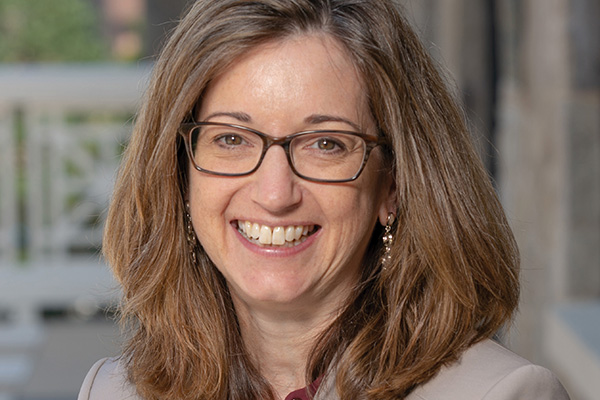
at their careers,” said Dean of the D’AMour College of Liberal Arts and Sciences Paula Fitzpatrick, Ph.D.
Enhancing a Commitment to the Liberal Arts
Becoming a University has enhanced Assumption’s commitment to the liberal arts, said dean of the D’Amour College of Liberal Arts and Sciences and Professor of Psychology Paula Fitzpatrick, Ph.D. “We have a deep commitment to educating the entire human to allow students to fully appreciate their existence, giving them opportunities to explore their places in the world and cultivate their passions and interests.”
The ultimate goal, she said, is to prepare graduates “to become productive citizens and contributing members of their communities while succeeding at their careers.”
Caitlin M. Stover, Ph.D., RN, dean of the Froelich School of Nursing, appreciates the interdisciplinary nature of Assumption’s new five-school structure.
“Our nursing students complete the same liberal arts coursework as all other Assumption students and that’s important to us, because having that core education will make them better nurses,” she said.
“Having a university structure with this school-based system allowed me to sit down with the other deans to flesh out how best to support nursing students as they move through this rigorous program.”
The biggest message Assumption is sending by dividing into separate schools and representing itself as a University is that it is continuing to grow. For example, though the School of Health Professions may be small, it is home to in-demand programs like health sciences that will continue to increase in popularity and need over the next several years.
Dean Fitzpatrick oversees the largest of the University’s five schools, with 12 different departments ranging from the STEM fields to the humanities, and newly minted programs like criminology and cybersecurity. “We offer a broad swath of disciplines, approaches, and ways of understanding the world,” she said, “and that represents the heart and soul of a liberal arts education.”
Academic programs will benefit from University status and Assumption’s restructuring in a number of ways, Dean Fitzpatrick said. “I see lots of benefits as we think creatively about how we can allocate our resources effectively and continue expanding what we offer, including experiential learning opportunities like internships, faculty-student research, and increased engagement between undergraduates and alumni.”
Assumption has long resembled “a university more than a college,” added President Cesareo. “However, as we discussed making this official transition, it was important to us that the liberal arts and our Catholic Assumptionist identity would be the unifying piece of the new school structure.”
Assumption has long resembled “a university more than a college,” added President Cesareo. “However, as we discussed making this official transition, it was important to us that the liberal arts and our Catholic Assumptionist identity would be the unifying piece of the new school structure.”
“This College embodies the founding principles of Assumption University,” President Cesareo said, “and our belief that, at this moment in time, a Catholic liberal education is more critical than ever, because it focuses on the deepest questions that every person must confront and answer, questions about the common good and our responsibility to one another, about the meaning of life, about the true, the good, and the beautiful. These questions are at the heart of every generation.”
For Joseph Foley, dean of the Grenon School of Business, the bottom line is the same as it has always been: “We’re trying to help students become better people than they were when they walked through our doors, which is why it’s so important to us to build a business education on top the liberal arts and sciences. Assumption will always keep that essential character.”
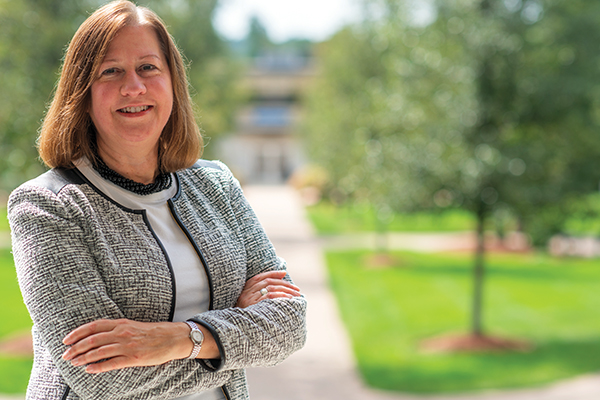
What Makes A University
“These changes are energizing and exciting as we shape an institution that can continue to meet – and surpass – the needs of our students now and in the future,” said Dean Fitzpatrick.
For students, Assumption’s new University status reflects the institution’s steady evolution and growth over time, with expanded undergraduate and graduate options, and more avenues for experiential learning opportunities in faculty-student research, community service, and innovative partnerships like the one with the Worcester Red Sox and The Hanover Theatre and Conservatory for the Performing Arts, along with internships. Dual-degree programs, some offering an accelerated path, provide additional opportunities for students to seamlessly transition from undergraduate programs into one of Assumption’s graduate programs.
In the view of many, said Kimberly Schandel, Ph.D., dean of the School of Graduate Studies, “Our University status is a reflection of what we were already doing. Many of our graduate programs have grown as a natural extension of our strongest and most popular undergraduate programs.”
Currently, six master’s degree-granting programs and three certificate programs are housed in the School of Graduate Studies. Assumption’s MBA program is housed in the Grenon School of Business.
Dean Schandel, who formerly served Assumption as associate provost, said that dividing Assumption into five different schools means that the deans can assess and launch new programs more efficiently. “For my part, it’s nice to have the ability to focus all of my time on graduate programs as we figure out how to add new ones and expand our enrollment,” she said.
President Cesareo added that the university structure provides undergraduates with increased access to Assumption’s robust graduate programs. “A university has more graduate opportunities that are linked to the undergraduate programs,” he explained, adding that there is the growth of graduate education that occurs at a university that does not occur at a college. “There are direct enrollment opportunities for undergraduates that lead them to one of our graduate programs. This allows for a seamless transition between undergraduate and graduate education.”
Dean Foley is equally enthusiastic about the changes to Assumption’s structure and its new University status.
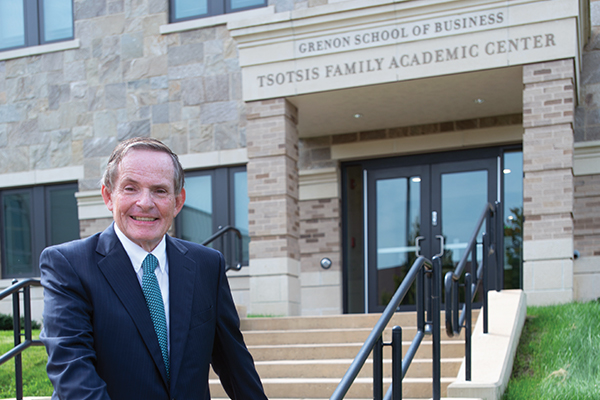
“We’ve always championed the idea of offering individual business majors rather than a single major in business administration,” he said. “Now, because of the creation of the separate Grenon School of Business, we can expand into new and innovative programs. And becoming a University means that we’ve stepped up to doing things at a different level, increasing Assumption’s appeal across different markets, particularly with international students.”
The new University designation also demonstrates that Assumption “is moving forward despite the many challenges in academia,” Dean Foley added. “People don’t like to think of an academic institution as a business, but it is. And, as with any business, if you sit still, you won’t keep moving forward.”
A New Way Forward
On May 9, the Board of Trustees approved an ambitious new strategic plan, “Ever Ancient, Ever New: Refounding Assumption,” laying out the vision for the University and its new school structure. This plan notes that Assumption has “had the foresight and courage to ‘refound’ itself” at critical moments in its history and offers a comprehensive blueprint for Assumption University to become “among the most revered Catholic universities in the Northeast” by continuing to evolve as a competitive and more selective institution while remaining true to its strong commitment to offer a premier, classical liberal arts curriculum rooted in the Catholic, Augustinian, and Assumptionist traditions.
This new vision affects the entirety of Assumption University – from academics to athletics and student life – as well as Assumption’s enrollment endeavors, not just in the Northeast but across the globe. President Cesareo stated that the university structure allows prospective students to obtain a better sense of how their particular interests can be met by the institution. The concept of a university gives students the broader experience that provides a holistic yet particular way of learning. Becoming a university also appeals more to international students.
“In the minds of people outside of the United States, the word college does not refer to higher education; it refers to secondary education,” he said. “And so if a student is searching for American universities, Assumption, as a University, will have greater appeal and interest.”
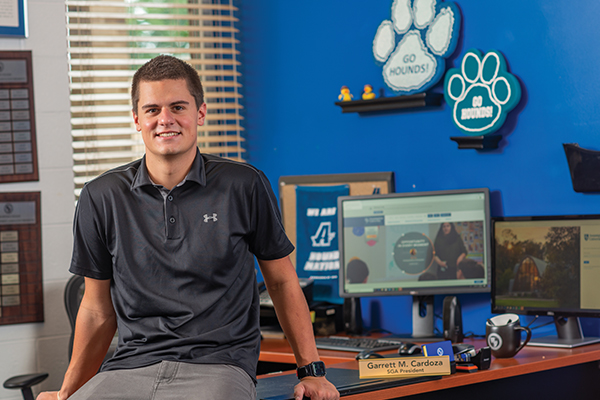
A New Look Grounded in Tradition
When envisioning the new visual identity of Assumption University, the institution kept in mind the community pride and investment in the Assumption College brand. While much of the branding is the same – the Assumption seal, the letter A, the beloved Greyhound Pierre, and the call to “Bleed Blue” – the visual identity of Assumption University is refreshed, sleeker, and modernized. Its identity has been elevated, just as the institution has been, by a transition to becoming a University.
For Student Government Association President Garrett Cardoza ’21, a double major in history and political science from Somerset, this transition to University was something he never thought he would see.
“A transition as large and meaningful as this is something you usually hear about but only a select few get to actually witness firsthand,” he said. “I feel so proud to be a member of the first graduating class of Assumption University. It’s more than just a ‘status’ as many people tend to see it. It’s about the five academic schools with their respective disciplines, intertwined by the core curriculum. It’s about new partnerships, like the [one with the] emerging Worcester Red Sox. New buildings, and so much more.”
Though Cardoza knows that he won’t immediately feel the impact of the University transition during his last year on campus, it’s the lasting effects that matter. “In my years after Assumption, this transition will be so helpful,” he explained.
“By ensuring Assumption’s future and everything the school stands for, I will go through my entire life being able to say I graduated from Assumption University. … For me, the transition to University is representative of Assumption once again proving its willingness to adapt and thrive in the ever-changing world of higher education.”
For alumni who earned a degree from Assumption College, the new University designation adds another level of prestige and increased value to the education they received.
“I am incredibly proud of Assumption’s latest milestone,” said Candace McGovern Race ’78, an executive vice president of marketing at Fidelity Investments and a former member of the Assumption Board of Trustees. “Assumption continues to look to the future and provide its students with the highest quality of education while expanding our academic offerings and fields of study. What will never change is the commitment Assumption has to liberal arts education and the community it sustains.”

